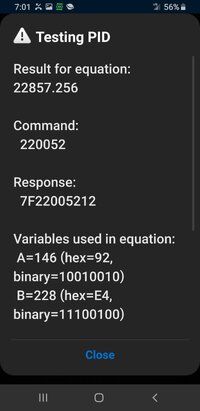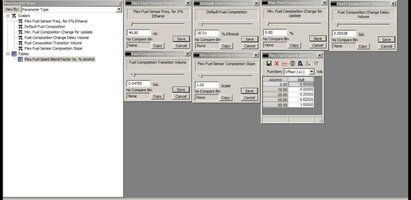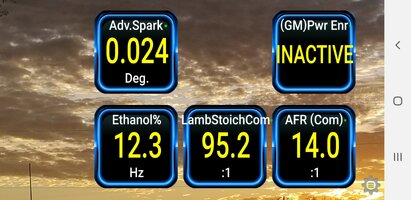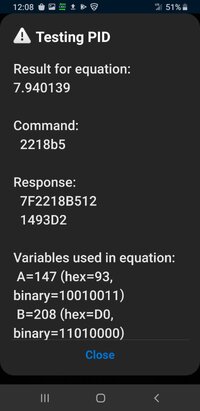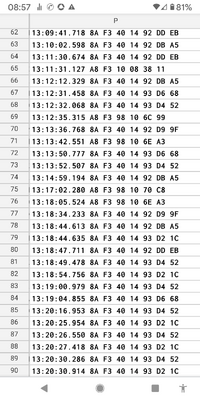So I was wondering if anyone is aware of an alternate pid to read the Flex Fuel sensor of a 3rd gen vortec 5.3, VIN Z. Through my nearly year of research and understanding there is often two or more pids that are available for any given sensor. Sometimes a PID number may be different to read from the same sensor for a percent versus a voltage rather than altering the equation. I am aware of a custom PID with the following values:
Pid: 220052
Long name: Ethanol Fuel Percentage
Header: Auto (Tried 6C10F1)
Scale:1X
Diagnostic Start: None
Diagnostic End: None
The only other relevant info I have is a table value in relation to this of B3103="Default Fuel Composition."
I have recently obtained a Supposed "Flex Fuel" spark Advance PID "(Aspark)" but unsure of how this even works or if it's related and if so can this be used to estimate ethanol percentage. Any help would be much appreciated! I know my flex fuel sensor is active in the tune as I can see my commanded AFR adjusting slightly and the "ASPARK" Is active. 220052 Is No green and Ecm gives a 7F620052"12" Error upon hitting test through Torque Pro running Bafx adapter.
Pid: 220052
Long name: Ethanol Fuel Percentage
Header: Auto (Tried 6C10F1)
Scale:1X
Diagnostic Start: None
Diagnostic End: None
The only other relevant info I have is a table value in relation to this of B3103="Default Fuel Composition."
I have recently obtained a Supposed "Flex Fuel" spark Advance PID "(Aspark)" but unsure of how this even works or if it's related and if so can this be used to estimate ethanol percentage. Any help would be much appreciated! I know my flex fuel sensor is active in the tune as I can see my commanded AFR adjusting slightly and the "ASPARK" Is active. 220052 Is No green and Ecm gives a 7F620052"12" Error upon hitting test through Torque Pro running Bafx adapter.
Last edited:

